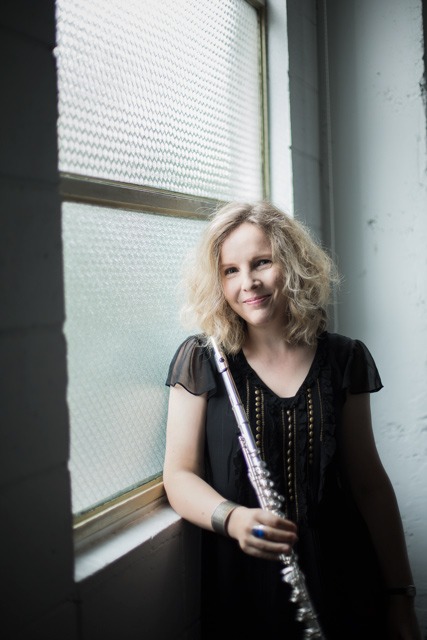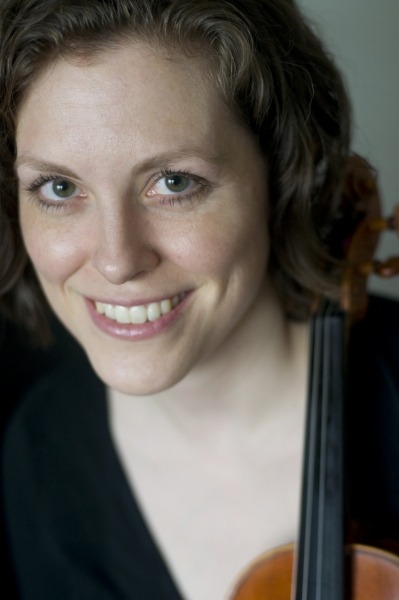Gateway Chamber Orchestra Presents
Ultra-Romanticism at the Franklin Theater
Deceptively spacious and nestled between two storefronts on the aesthetic and quaint Main Street of historic Franklin Tennessee, the Franklin Theater welcomes a vast array of events from musical theater performances to the traditional film screening. Warm, regal golds and reds decorate the interior, accentuating the intimacy of the venue to accommodate the crowd that anxiously awaits the Gateway Chamber Orchestra. People chatter excitedly in anticipation, and this specific audience is full of groups of people who are already familiar with one another, making the room feel even more responsive and pleasant.

The program for the evening of September 30th boasts an ultra-romantic offering of Gabriel Fauré, Carl Reinecke, and Franz Schubert, with the headline of “Artistry of Lorna McGhee,” highlighting the featured soloist (a series given by the organization that draws from masterful musicians across the country). With musicians hailing from the Austin Peay State University faculty to the Nashville Symphony, the orchestra itself carries so much influence and notoriety that even discounting McGhee, the audience is promised a high-caliber musical experience. President and conductor Gregory Wolynec takes the podium in preparation for the performance, but before the orchestra begins, he seizes the opportunity to introduce the pieces on the first half of the concert so that the audience has a framework for which to follow the program.
Gabriel Fauré’s Pelléas et Mélisande, a suite of incidental music based on the play by Maurice Maeterlinck of the same name, follows the titular characters through their turbulent love to their untimely demise. The central theme of the play revolves around the cyclic nature of creation and destruction for the sake of love- the beautiful Mélisande marries the galant Goloud in response to his acts of chivalry but soon after falls in love with his younger brother, Pelléas, which ultimately leads the pair to their deaths. Though Fauré hesitated to sacrifice his musical content and integrity for the sake of conforming to an external narrative (he was an absolutist in the argument that pervaded the 19th century about the purpose of music), his score sets the atmosphere for the play, even slightly utilizing the leitmotif technique, without depicting every change of character and mood.
Opening with a lilting melody beautifully executed by the violins, the first movement occurs at a spring where Mélisande has lost her crown in the water. She despairs, having left a life of turmoil and wanting no remnant of her former existence. This peaceful setting grows through an ever-ascending melody, warm sounds emitting from the strings and woodwinds, before two disruptive hunting calls in the horn, marking the arrival of Goloud. Resonant and strident, the horn calls between the rich chorales in the strings is a lovely dichotomy. La Fileuse, the title of the second movement literally translating to The Spinner, functions as an orchestral rendering of a spinning song. While the first violins spin away their expertly even sixteenth-note triplets, an interplay of double reed declarations forms the initial melody. Principal oboe Roger Wiesmeyer adeptly establishes a precedent of flowing lyricism and lush tone for all who follow to emulate. Undoubtedly the most renowned movement from this suite, though the last movement to be added, the Sicilienne not only uses prior unpublished material of Fauré’s, but has also since been adapted into works for solo cello and piano (variations include solo transcriptions for other instruments as well). Lisa Wolynec shines on flute, her sound delicate and lovely. An omission from this performance is La Chanson de Mélisande, which provides some motivic material utilized in the fourth movement, the depiction of Mélisande’s and Pelléas’ deaths. Juxtaposed over expansive phrases in the strings are marked dotted rhythms in the woodwinds that enforce the idea of a dirge. Having played much more of a background role to this point, the trumpets have a stark moment of color, Rob Waugh and Alec Blazek striking the perfect balance within the ensemble. The ending of the piece is muted and quick, portraying the fall of the hero and heroine with little fanfare and much lament.
When Lorna McGhee takes the stage, the audience falls into a trance. The sound that emanates from such a small vessel is breathtaking. McGhee fills the entire theater, commanding both the audience and the orchestra. She is literally moved by the music, and all her movement is tied directly to the musical content as she interacts with the orchestra. Her technique serves as an extension of her voice and body, working hand in hand with her musicality, and she allows every level of her dynamic playing a

character and color to which she naturally associates. A staple in the flautist repertoire, Carl Reinecke’s three movement concerto exhibits much gorgeous melodic material over diverse styles and opulent harmonies. The primary theme of the first movement is a soaring gesture that winds its way through the full ensemble as the soloist remarks on these statements with conversational virtuosity. McGhee interacts flawlessly within these pairings. One of note is a duet where the violin outlines the melodic structure while solo flute fills out that skeleton with arpeggiation- Concertmaster Emily Hanna Crane and McGhee perform this so tastefully. In contrast to the sweeping Romantic ideas in the first movement, the initial theme of the second is more akin to a funeral march. This movement alternates between this metric lamentation and a more hopeful and rubato response until a final return to the first statement and a final note so clear and shimmering that one could feel the audience hold their breath. Fluid cascades of notes and virtuosic passages fill the third movement, which McGhee breezes through with ease to the concluding triumphant cadence.
Schubert’s fourth symphony closes the program. The subtitle “Tragic” was attached to the piece by Schubert himself sometime after his completion of the work (he finished this composition at the ripe age of 19 years old). Though the opening statement occurs in a minor key, the majority of the following themes and developmental sections center in major. Why he would choose the word tragic to define this work that is seemingly the opposite is unknown to this day, though some scholars speculate that he may have been trying to garner publicity for the premiere. Schubert takes influence from Beethoven for the construction of this symphony, utilizing specific thematic material in the first movement (as well as the development of this material between the first two movements) and certain compositional devices that can be found in Beethoven’s string quartets. Heavily featured in this symphony is the woodwind section with beautiful exposed contributions from bassoonist Dawn Hartley and oboist Wiesmeyer. The third movement is a boisterous romp with shifting metrical impulses and huge dynamic changes that prepares the momentum into the yearning first theme of the fourth movement. A true finale, the Allegro boasts an impressive number of notes that are carried skillfully by the entirety of the orchestra, providing an apt denouement for a concert that relies so massively on individual artistry and musicianship. Full of rich sonority and lyrical phrasing, this performance of the Gateway Chamber Orchestra uses Romance and distinct virtuosity to bestow a beautiful production upon its audience that fully showcases the brilliant Lorna McGhee.



